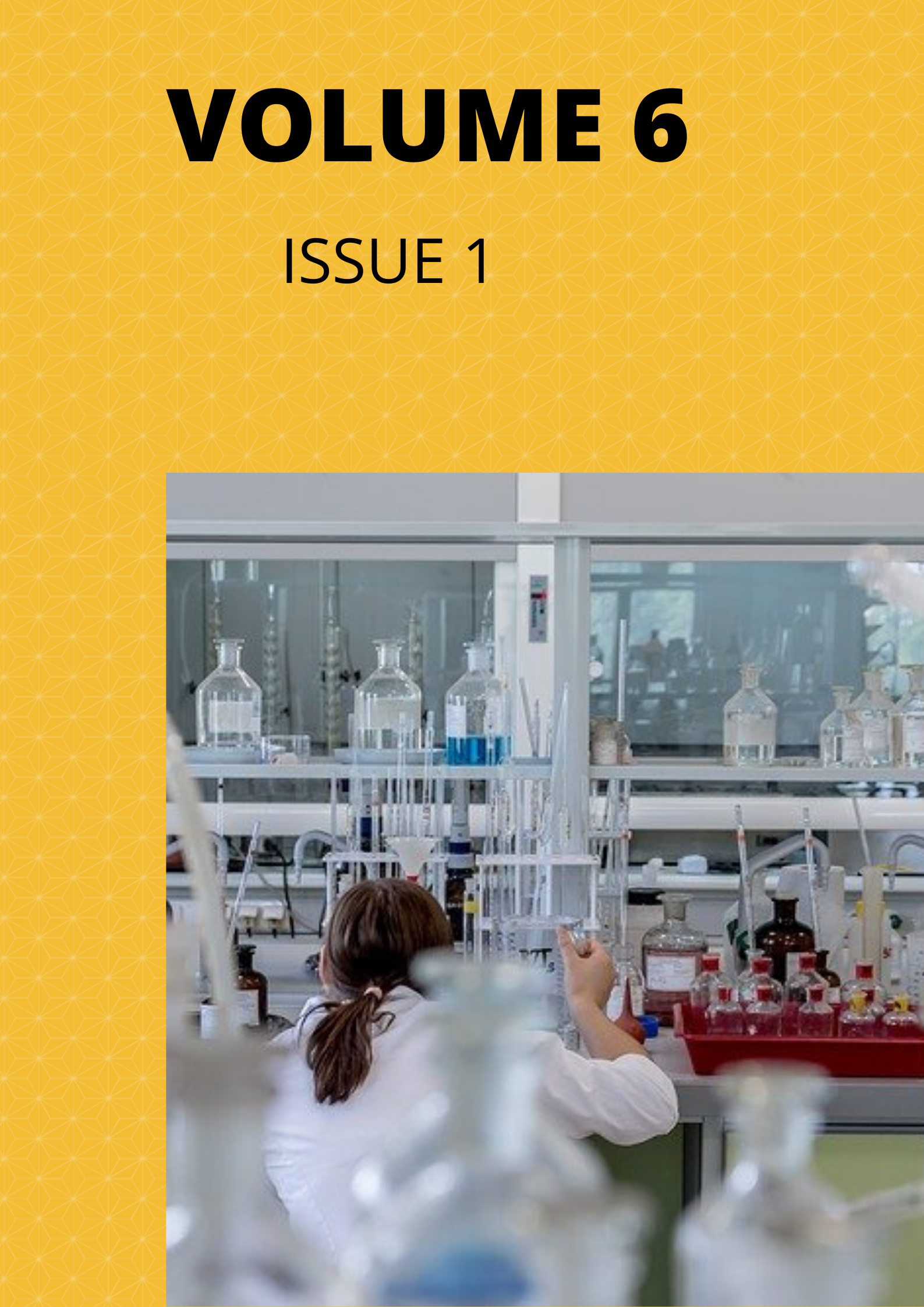The Redox Reaction between Di-μ-Oxo-Tetrakis (2, 2’- bipyridine) – Dimanganese (III, IV) Perchlorate and 1, 3-Dihydroxybenzene in Hydrochloric Acid
Keywords:
Redox reaction, 1,3-dihydroxybenzene, di-μ-oxo-tetrakis (2, 2’- bipyridine) – dimanganese (III, IV) perchlorateAbstract
The redox reaction between di-μ-oxo-tetrakis (2, 2’- bipyridine) – dimanganese (III, IV) perchlorate 3+ and 1,3-dihydroxybenzene ( Q) in hydrochloric acid was investigated using spectroscopic technique. The stoichiometry of the reaction was 2:3 for 3+: Q. The rate of reaction was first order with respect to both species while the overall rate of reaction was second order. Investigation of the effect of ionic strength on the reaction gave evident for non-dependence of the rate of reaction on change in dielectric constant, D, of the medium. The rate of the reaction increased with increase in the concentration of the acid and was found to be unaffected by the addition of added (Ni2+, NO3- and HCOO-) ions. There was no gel-formation in the course of the reaction and Michaelis-Menten’s type plot gave a straight line starting from the origin.
Downloads
Published
Issue
Section
Most read articles by the same author(s)
- Patricia Ese Umoru, Femi Emmanuel Awe, Joseph Ifeanyi Uche, Oluwayemi Abiodun Babatunde, Ibrahim Aliyu Salaha, Investigation of the Adsorptive And Inhibitive Properties Of Cucurbita Maxima Peel Extract And Halide Ions As Inhibitors For Stainless Steel in 1m H2so4 Solution , Communication In Physical Sciences: Vol. 10 No. 2 (2023): VOLUME 10 ISSUE 2
Similar Articles
- Atim Sunday Johnson, Idongesit Bassey Anweting, Idongesit Edem Okon, Electron Transfer Reactions of Tetrakis (2, 2- Bipyridine)-µ Oxodiiron(III) Complex and Dithionate Ion in Aqueous Acidic Media: Kinetic and Mechanistic Approach , Communication In Physical Sciences: Vol. 10 No. 1 (2023): VOLUME 10 ISSUE 1
- A. D. Onu, Kinetics of Cu2+ - Catalysed Redox Reaction of n-(2-hydroxylethyl) ethylenediaminetriacetatocobalt(III) with Hydrazine Monohydrate in Aqueous Acid , Communication In Physical Sciences: Vol. 3 No. 1 (2018): VOLUME 3 ISSUE 1
- Bako Myek, Spectrophotometric Investigation of the Redox Reaction of Acid Green 1 with Periodate Ion in Aqueous Acid: Kinetics and Mechanistic Approach , Communication In Physical Sciences: Vol. 10 No. 2 (2023): VOLUME 10 ISSUE 2
- Pius Onyeoziri Ukoha, Uchechukwu Ruth Obeta , Reduction of the Adipato-Bridged Binuclear Iron(III) Complex, [(Fesalen)2adi] by Thioglycolic Acid: Kinetic and Mechanistic Study , Communication In Physical Sciences: Vol. 3 No. 1 (2018): VOLUME 3 ISSUE 1
- B. Myek, S. O. Idris, A. D. Onu, M. K. Yakubu, Kinetics and Mechanism of the Oxidation of Orange II by Chlorate Ion in Aqueous Hydrochloric Acid , Communication In Physical Sciences: Vol. 5 No. 2 (2020): VOLUME 5 ISSUE 2
- Ifeanyi E. Otuokere, K. K. Igwe, Ni(II) complex of (3,3-dimethyl-7-oxo-6-(2-Phenylacetamido)-4-thia1-Azabicyclo[3.2.0]heptane-2-carboxylic acid : Synthesis, characterization and antibacterial activities , Communication In Physical Sciences: Vol. 5 No. 1 (2020): VOLUME 5 ISSUE 1
- Ndidiamaka Justina Agbo, Pius Oziri Ukoha, Uchechukwu Susan Oruma, Tania Groutso, Oguejiofo Theophilus Ujam, Solomon Ejike Okereke, Crystal Structure, in Silico Studies and Anti-diabetic Potentials of 3-e-(1,5-dimethyl-3-oxo-2-phenyl-2,3-dihydro-1h-pyrazol-4-yl)hyd -razinylidene]pentane-2,4-dione(hdpp)and its Cu(II) and Ni(II) complexes , Communication In Physical Sciences: Vol. 11 No. 4 (2024): VOLUME 11 ISSUE 4
- Izuagbe Gilbert Osigbemhe , Muluh Emmanuel Khan, SYNTHESIS, SPECTROSCOPIC CHARACTERIZATION AND BIO-INVESTIGATION of N-(2-furylmethylidene)-1,3, 4-thiadiazole-2-amine and its Iron (III) COMPLEXES , Communication In Physical Sciences: Vol. 12 No. 4 (2025): VOLUME1 2 ISSUE 4
- Uchechukwu Susan Oruma, Pius Oziri Ukoha, Collins U. Ibeji, Lawrence Nnamdi Obasi, Obinna C. Okpareke, Ebubechukwu N. Dim, Klaus Jurkschat, Ponnadurai Ramasami, Synthesis, Spectroscopic, Biological and DFT Studies of 2,4,6-Tris(4-Carboxyphenylimino-41-Formylphenoxy)-1,3,5-Triazine and its Trinuclear Dy(III) and Er(III) Salen Capped Complexes , Communication In Physical Sciences: Vol. 7 No. 3 (2021): VOLUME 7 ISSUE 3
- Kayode Sanusi, Computational Study of the Reaction Mechanism for the Formation of 4,5-Diaminophthalonitrile from 4,5-Dibromo-1,2-Diaminobenzene and Copper Cyanide , Communication In Physical Sciences: Vol. 11 No. 4 (2024): VOLUME 11 ISSUE 4
You may also start an advanced similarity search for this article.




